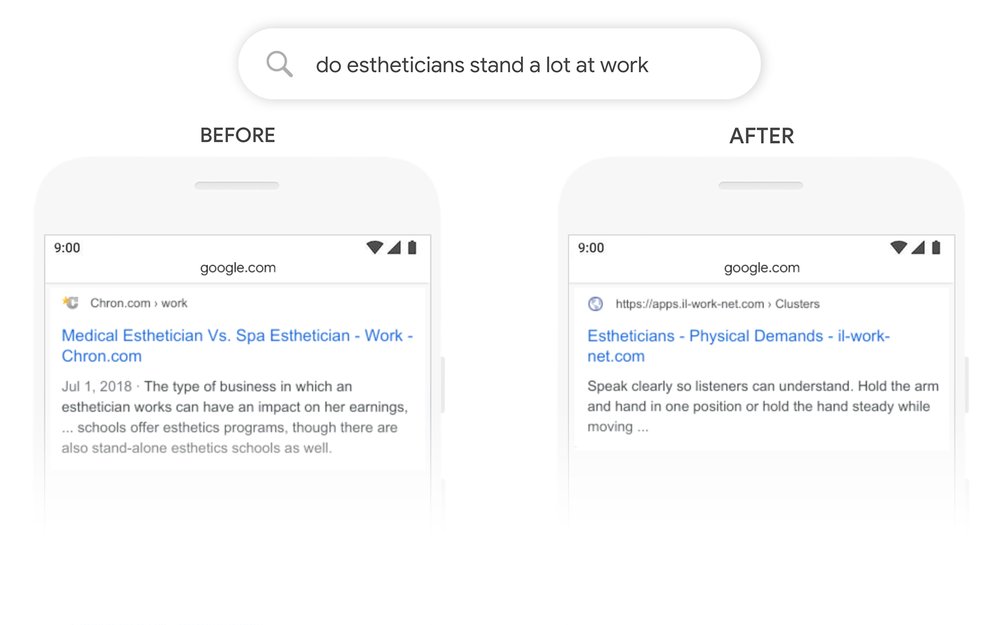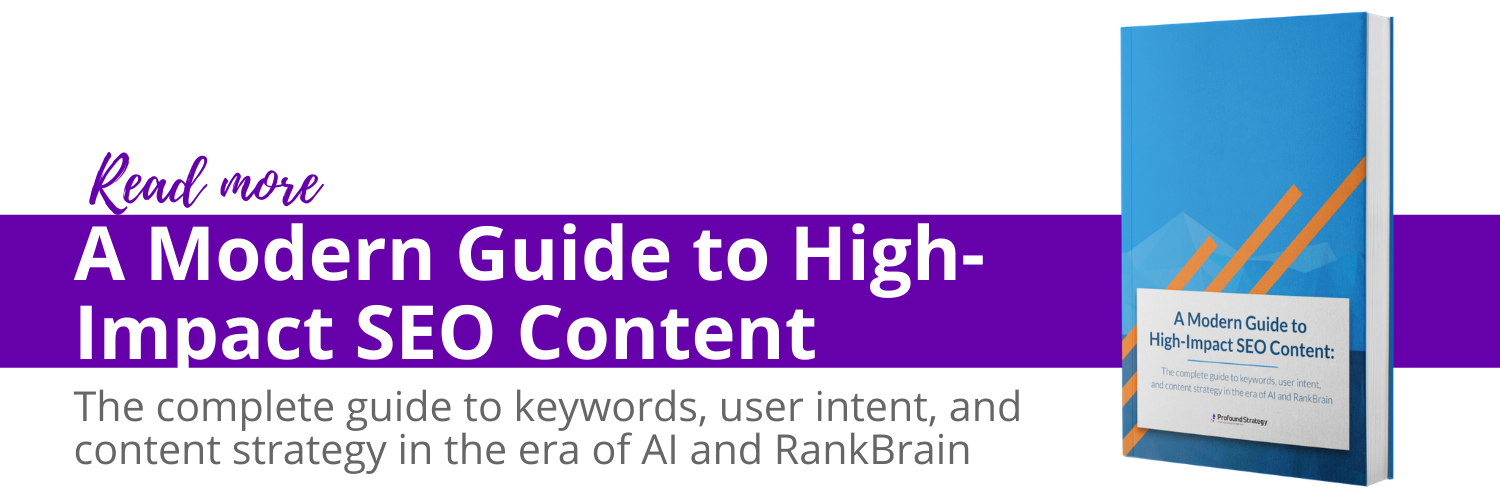Google’s BERT Update: Profound Strategy’s SEO Strategy Continues to Stay Ahead of Major Algorithm Changes
Google’s latest search algorithm update, BERT, is the company’s biggest in the last five years. Despite the significance of this change, Profound Strategy’s clients continue to see reliable SEO growth and no downside after major algorithm updates. In fact, Profound Strategy’s strategic framework seems to predict such updates.
By focusing on the common goal that drives Google’s algorithm updates—i.e., providing the best, most helpful content and experience to users—rather than the updates themselves, we ensure our content endures these changes, even ones as significant as BERT.
Staying Ahead of Google’s Updates: Optimizing for the User Vs. Optimizing for Algorithms
The artificial intelligence (AI) that powers algorithms like BERT is constantly improving, often in ways experts don’t really understand. And Google isn’t just the king of online search, it’s also one of the biggest investors in AI. Trying to grow SEO rankings and traffic with tactics that don’t add value to users is a fool’s errand, because any such tactic will stop working (or never truly worked in the first place). Once that next change comes along, marketers are left scrambling to adjust content written with an algorithm-specific checklist in mind.
For years, Profound Strategy has been building an SEO framework that operates outside of the typical, confusing and convoluted approach to SEO. It works by relentlessly chasing the same goal as Google’s algorithms: systematically satisfying users better than any other website.
The user is what drives virtually all of Google’s updates (and the tech giant hasn’t been shy about that fact). By going after that same end-goal, you create a lasting SEO strategy. In other words, by building content for the user and not the algorithm, Profound Strategy’s tactics have driven reliable SEO growth for years and have seen no significant downturn after major algorithm updates—including BERT.
How Profound Strategy Designs SEO for the User
Google’s focus on the user is why we see BERT as good news for us and our clients. The software is a big step forward in processing more conversational search terms. It signals the company’s commitment to better understanding what users need from organic search—a commitment that aligns perfectly with our approach to SEO.
Our user-first process relies on several crucial steps. The first is identifying and grouping keywords that serve the same search intent, or user need—why a person uses the search terms they do and what they’re actually looking for. (Think: know, go, do or buy.)
Though most SEO strategies rely heavily on keywords, keywords themselves aren’t terribly helpful. That’s because most search terms represent multiple user needs. By correlating keywords with user needs and instead focusing on those needs, we get a meaningful understanding of a client’s market in organic search and how to target it.
We then leverage that knowledge of the market, and our clients’ goals and expertise, to create content. While many marketers think producing high-quality content is enough to snag a top-ranking spot on a SERP, we know that to truly compete, you need the best content. So we examine the top-performing content for a user need and look for commonalities. After all, there’s a reason Google is prioritizing pieces with those shared characteristics: It thinks those bits are important to the user! Those traits are the foundation upon which we build content that ranks above the rest.

This approach is the key to why Profound Strategy content holds up. Our articles perform three to 10 times better than those written using a standard SEO checklist. In one case, a client saw a piece of our content outrank all of their other, non-Profound Strategy-produced content within six months. In another case, a piece of our content won Google’s featured snippet for competitive terms in a matter of weeks.
These are the kinds of results you can only get with our user-first SEO strategy, even in the face of updates like BERT.
A Summary of Google’s BERT Update
Though we maintain our stance that the user should always be front-of-mind, it’s still important to understand Google’s updates.
BERT stands for Bidirectional Encoder Representations from Transformers. The model is a significant step forward in processing more conversational search queries. It helps Google parse the order of words in a query and understand how that order impacts meaning.
Take the phrase “can you get medicine for someone else at pharmacy.” Before BERT, Google really only focused on the words “medicine” and “pharmacy,” serving up articles about getting a prescription filled at a pharmacy. It missed the fact that the query is really asking whether or not you can pick up a prescription for someone else. Now, Google recognizes that nuance, displaying articles about whether patients can have friends and family pick up their prescriptions.

Google’s push to address such nuance is likely due to the increase in the use of voice search on mobile devices and smart speakers, since people tend to use more natural language for those queries. Regardless of the exact reasons behind BERT’s development, the company expects it to affect 10 percent of English-language searches in the U.S., with the update eventually rolling out in other countries and languages.
So what does this mean for SEO? While Google didn’t give specifics on which websites saw traffic changes during BERT’s testing, Vice President of Core Search, Ben Gomes, did say that “if you have niche questions, then a niche publisher might be surfaced for that.”
Reading between the lines, it seems searches involving more specific, long-tailed keywords and phrases could see bigger changes in what sorts of results Google spits back.
Given that, we expect an increase in organic traffic for our clients’ relevant long-tail queries, because Profound Strategy’s research-backed content is uniquely positioned to fulfill those needs.
No matter how BERT shakes out, when it comes to SEO, it’s critical that the user be your north star. In the words of the search giant itself, “Focus on the user and all else will follow.”
Want to learn more about how we can help you craft SEO-certified content that can stand the test of time? Contact us to speak with one of our SEO strategists today.
What's Next?
Profound Strategy is on a mission to help growth-minded marketers turn SEO back into a source of predictable, reliable, scalable business results.
Start winning in organic search and turn SEO into your most efficient marketing channel. Subscribe to updates and join the 6,000+ marketing executives and founders that are changing the way they do SEO:
And dig deeper with some of our best content, such as The CMO’s Guide to Modern SEO, Technical SEO: A Decision Maker’s Guide, and A Modern Framework for SEO Work that Matters.





